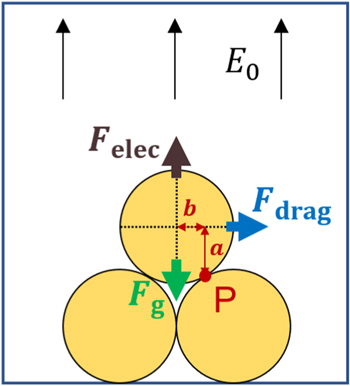Planet. Sci. J. 2 238 DOI 10.3847/PSJ/ac38a4 10.3847/PSJ/ac38a4
Kruss M., Salzmann T., Parteli E., Jungmann F., Teiser J., Schönau L., Wurm G.
It is a long-standing open question whether electrification of wind-blown sand due to tribocharging—the generation of electric charges on the surface of sand grains by particle–particle collisions—could affect rates of sand transport occurrence on Mars substantially. While previous wind tunnel experiments and numerical simulations addressed how particle trajectories may be affected by external electric fields, the effect of sand electrification remains uncertain. Here we show, by means of wind tunnel simulations under air pressure of 20 mbar, that the presence of electric charges on the particle surface can reduce the minimal threshold wind shear velocity for the initiation of sand transport, u*ft, significantly. In our experiments, we considered different samples, a model system of glass beads as well as a Martian soil analog, and different scenarios of triboelectrification. Furthermore, we present a model to explain the values of u*ft obtained in the wind tunnel that is based on inhomogeneously distributed surface charges. Our results imply that particle transport that subsides, once the wind shear velocity has fallen below the threshold for sustained transport, can more easily be restarted on Mars than previously thought.

Schematical diagram of the main relevant forces acting on a particle that is protruding from the granular bed considered in our experiments.